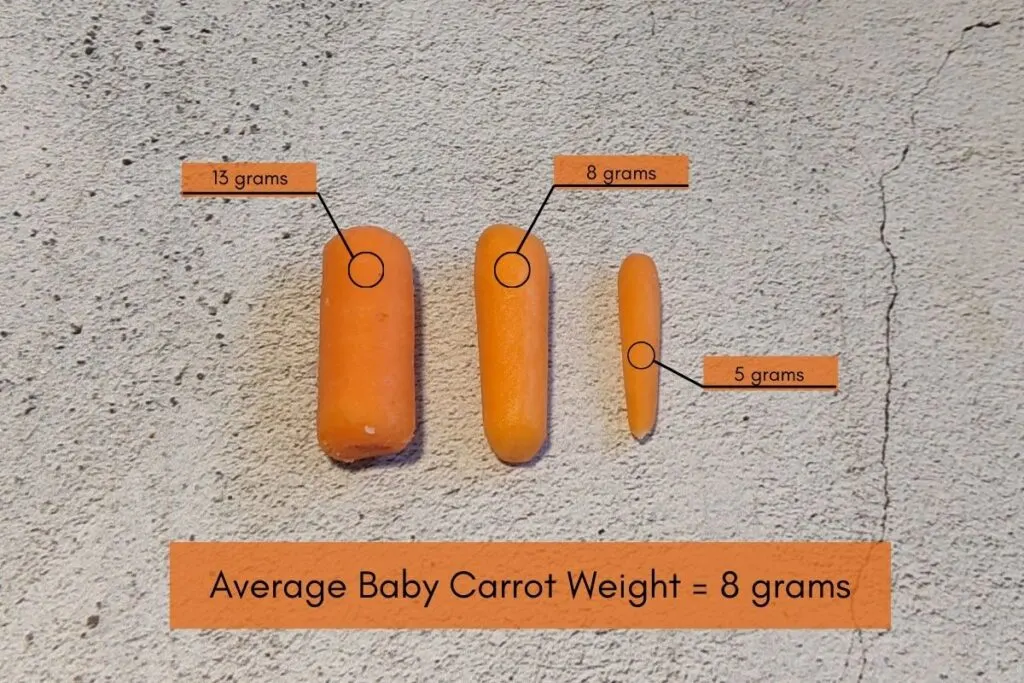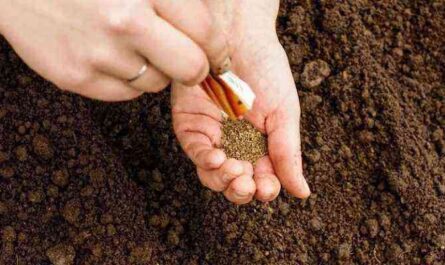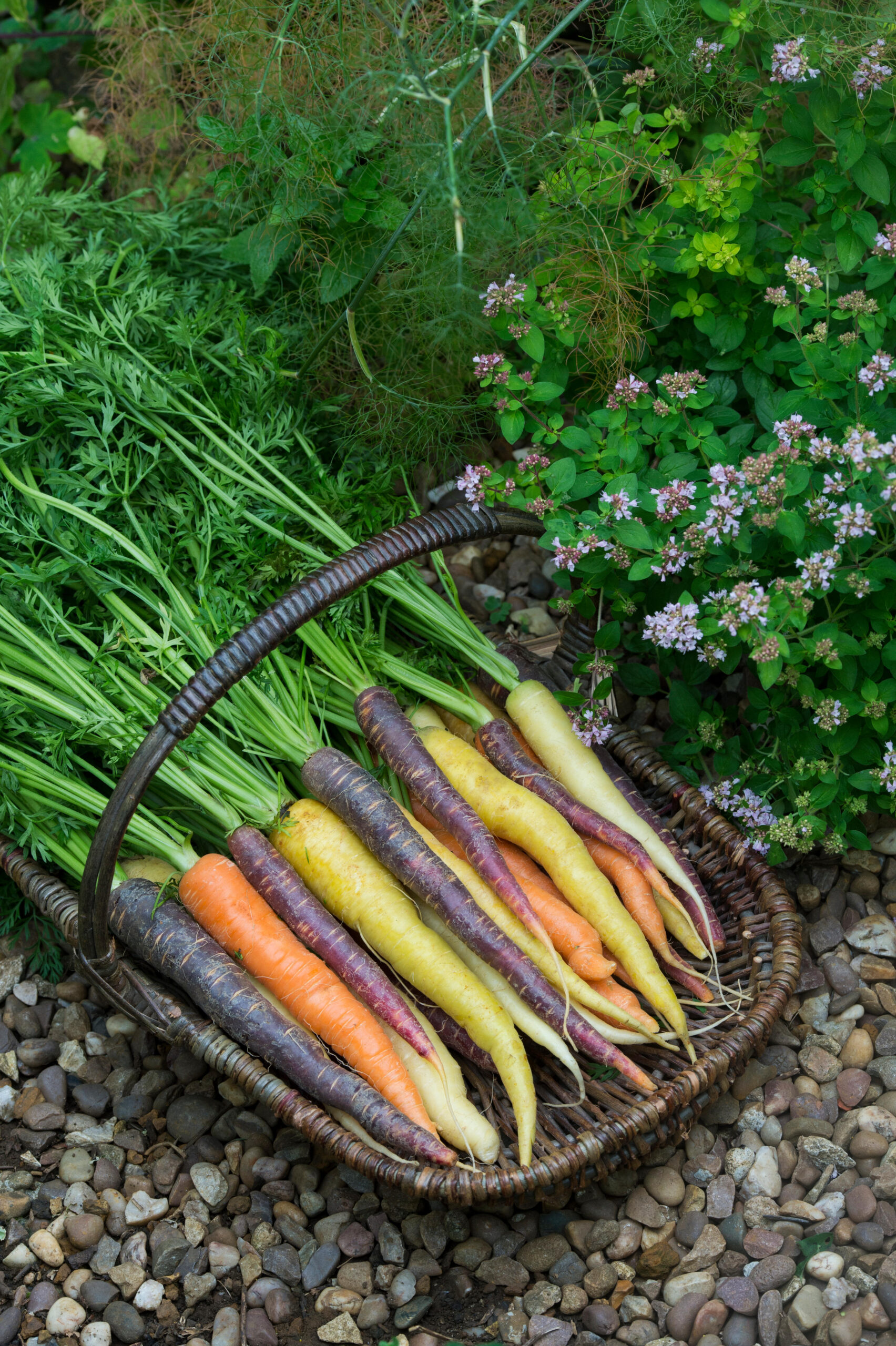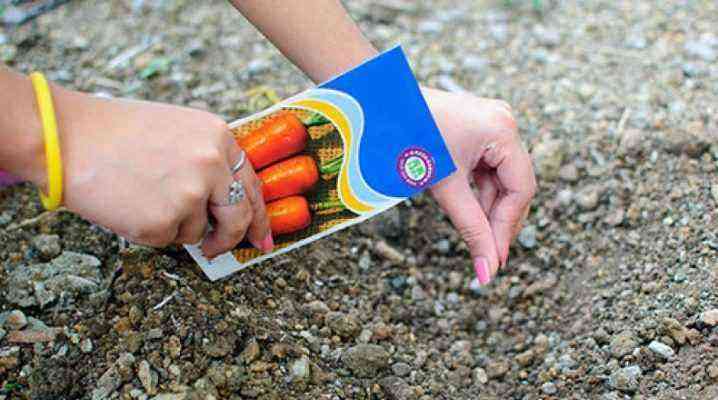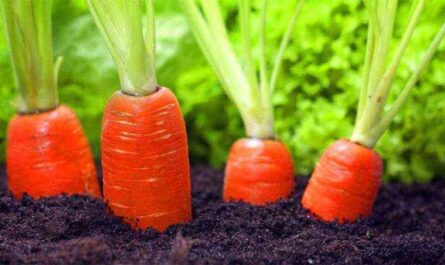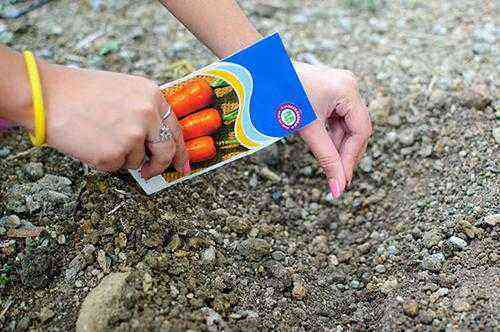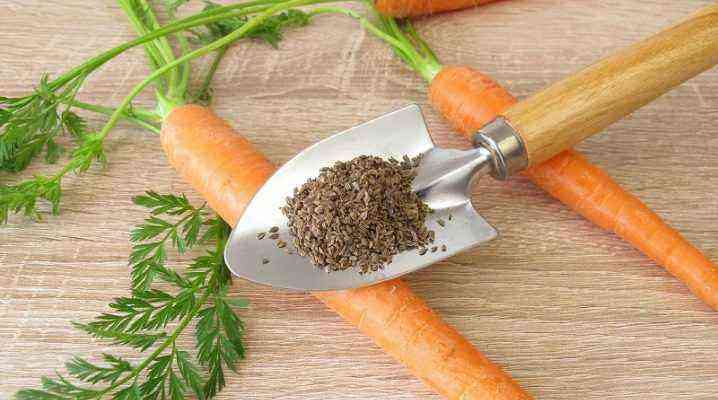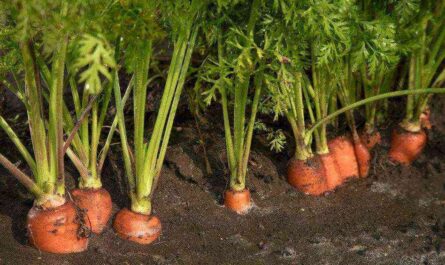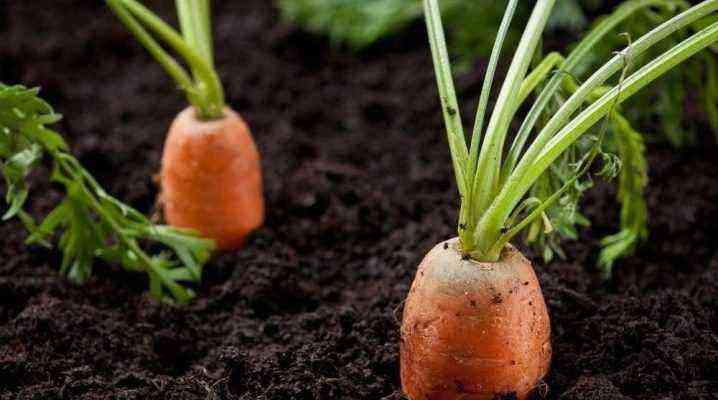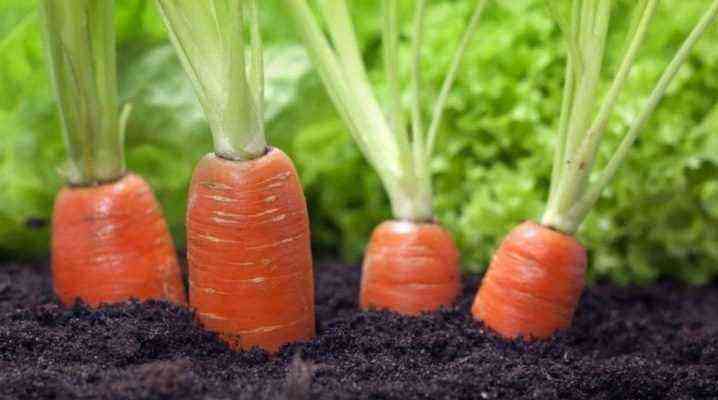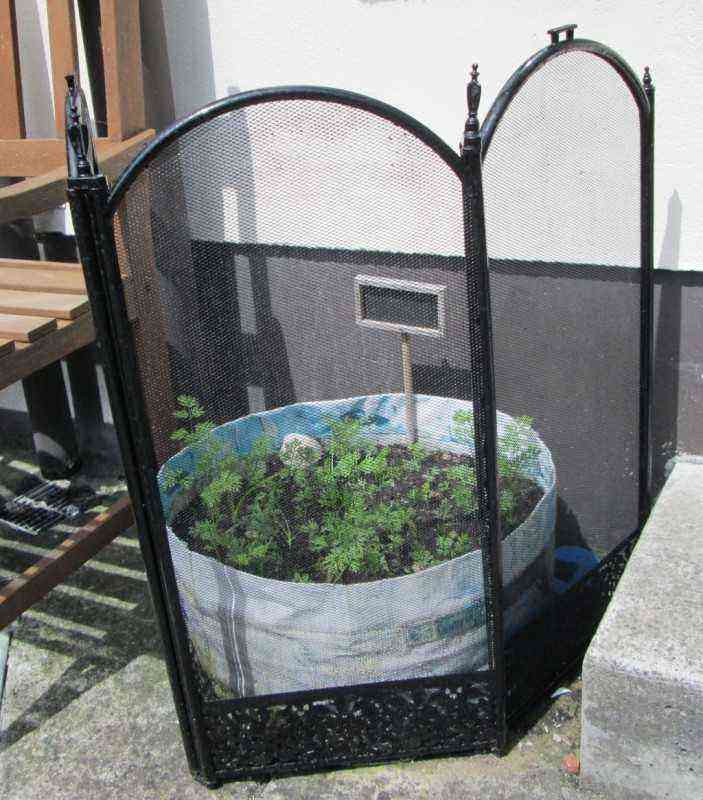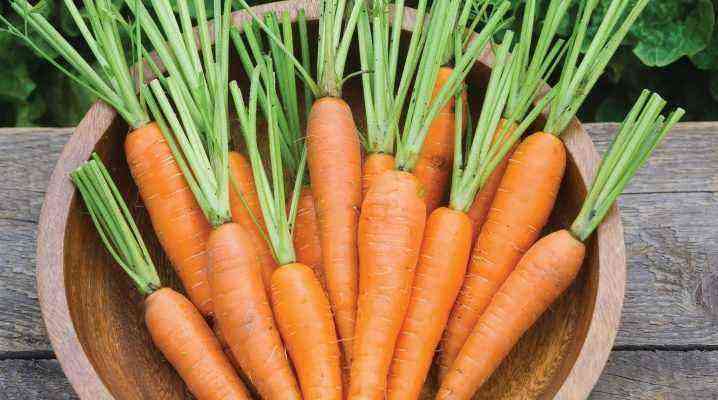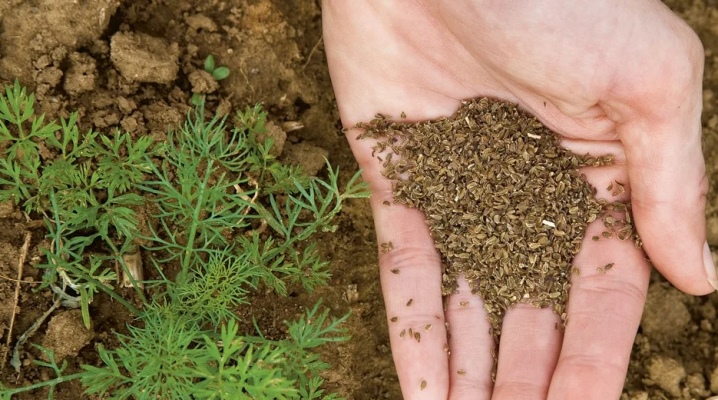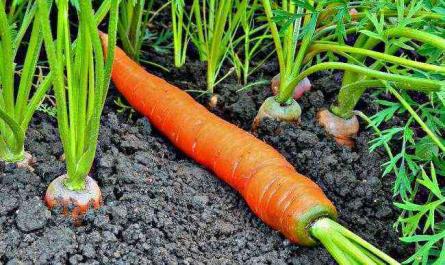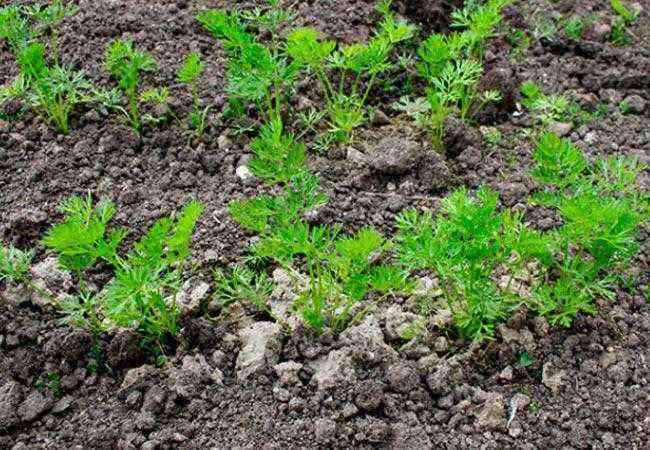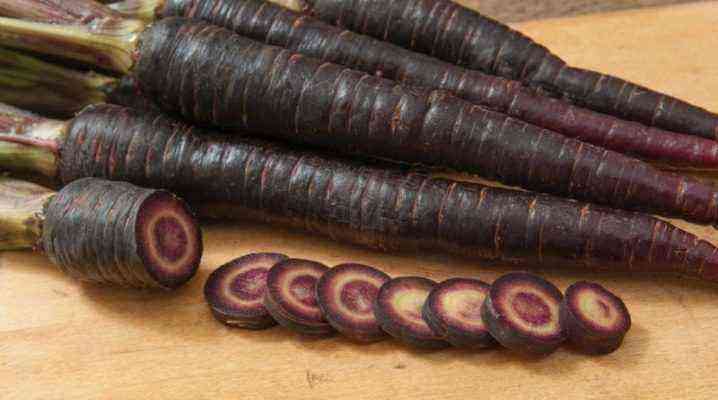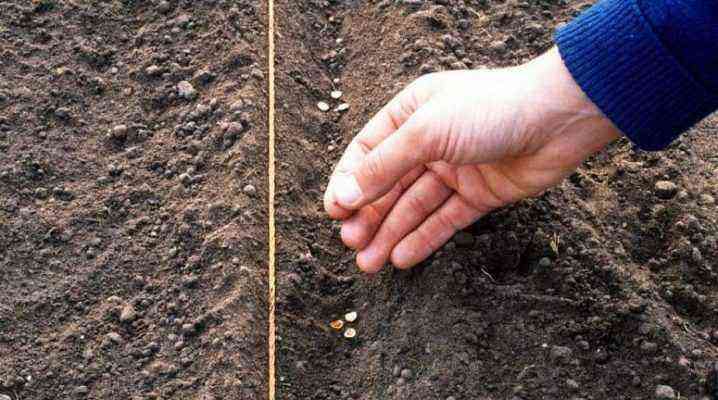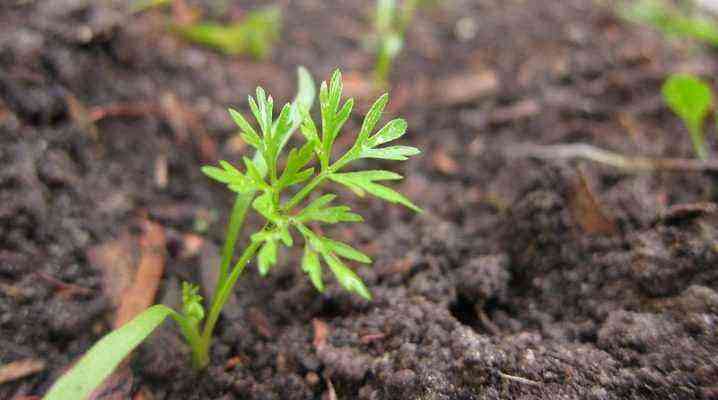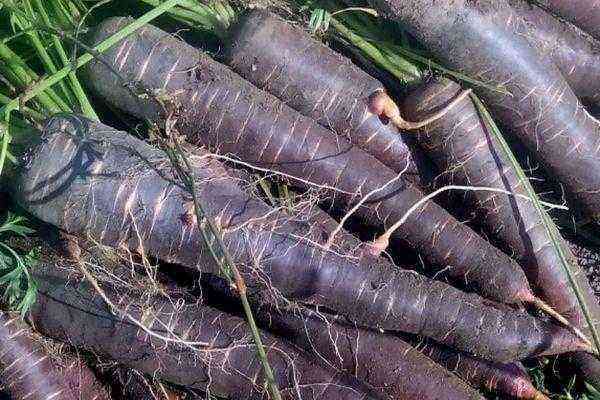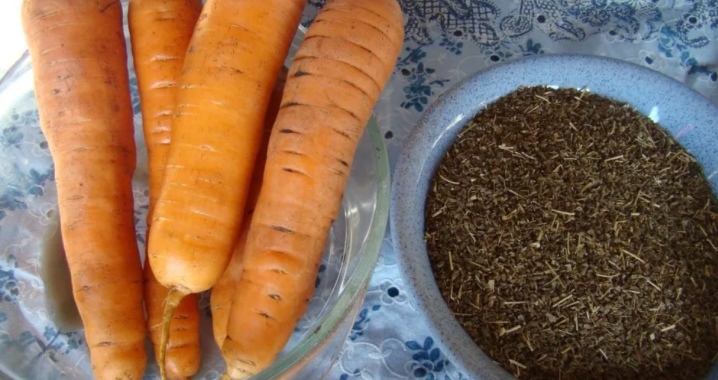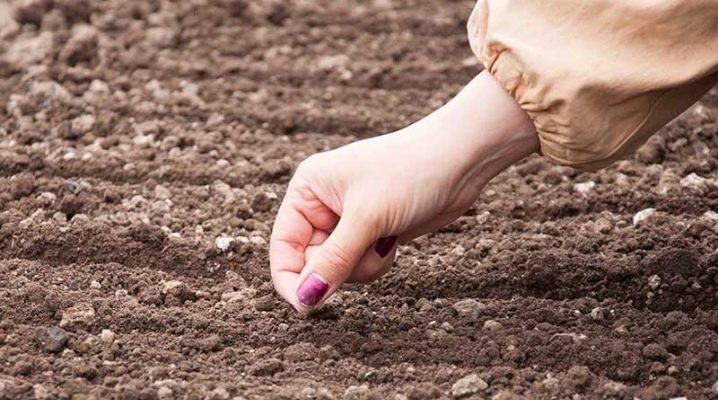
Like the vast majority of vegetable crops, it is customary to plant carrots in the spring so that they can harvest in the fall. However, for a long time and quite successfully, farmers have been practicing a completely different way of growing this popular vegetable. We are talking about planting carrots before winter, which has certain nuances, as well as its obvious advantages and some disadvantages. The most important thing in this case is the possibility of obtaining the first and fully ripened root crops much earlier than the collection of even the most early and early varieties.
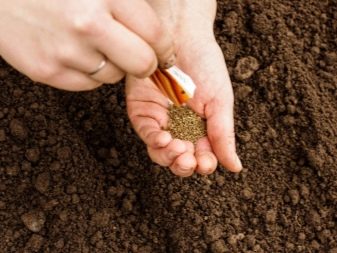
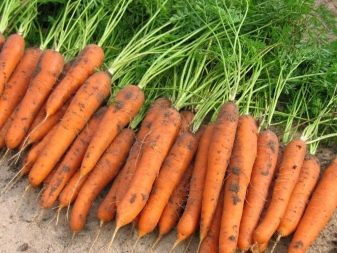
Advantages and disadvantages
First of all, it is necessary to analyze and objectively evaluate the key advantages of the described approach to growing a crop. Winter sowing of a vegetable has the following undeniable advantages.
- An opportunity to release such a scarce time of the spring period.
- Getting an early harvest. Properly sown in autumn, carrots reach their full maturity by the middle of the first summer month. By the way, this is 2-3 weeks earlier than the harvests of the earliest spring varieties.
- Obtaining large and juicy fruits of the correct form. When planting carrots before winter, melt water constantly provides the necessary soil moisture.
- Minimizing the risks of causing significant damage by pests that do not have time to become sufficiently active in early spring. And we are talking mainly about such a potentially dangerous parasite as the carrot fly.
- Possibility of rational use of sites. On the beds, which are vacated already at the beginning of summer, other crops can be planted.
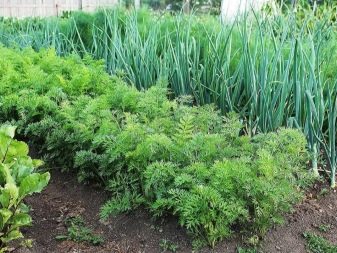
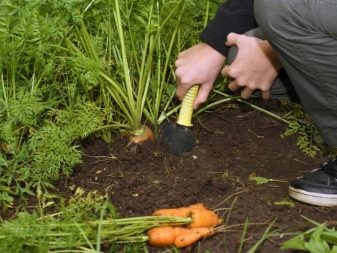
Against the background of the listed advantages of the method under consideration, attention should be paid to two disadvantages.
- With early planting, you may encounter a temporary thaw that can lead to premature germination of carrots, which are likely to be destroyed by the very first frost.
- A harvest obtained in early summer is usually not intended for long-term storage.
In the vast majority of cases, root crops begin to deteriorate quickly even when the most favorable conditions are created.
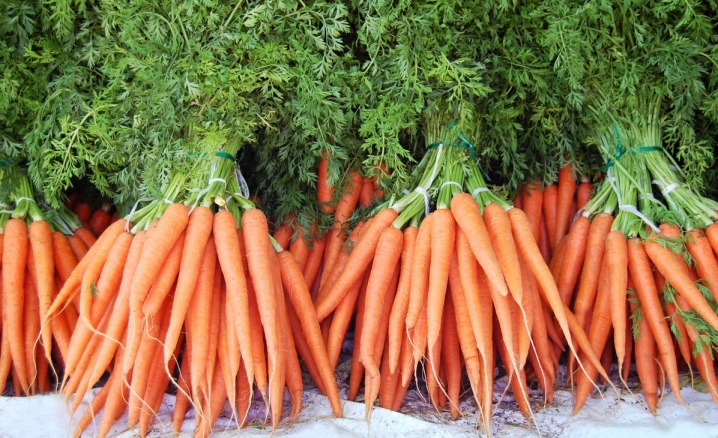
Suitable varieties
Some gardeners believe that it is better to take early-ripening varieties for winter sowing. However, in practice, they are completely unsuitable for growing vegetables in this way. The fact is that such carrots sprout very early, so the shoots are guaranteed to die in the cold. Experienced gardeners try to focus on species that are not characterized by an increased tendency to bloom.
As practice shows, it is good to sow the following varieties before winter:
- “Moscow winter” (A-515);
- Shantane Royal;
- “Beauty Maiden”;
- Nandrin and Nectar (F1);
- “Losinoostrovskaya-13”;
- “Incomparable”;
- “Children’s sweet”;
- “Nantes Improved”.


When choosing and purchasing seed material, it is strongly recommended to pay attention to the study of instructions. It is important to know clearly when the carrots should sprout, and whether it is generally suitable for planting before winter. Experts advise to give preference to granulated seeds that have undergone pre-treatment. It is worth considering that such material will be much easier to sow.
Deadlines
Naturally, it is impossible to predict the exact time frame for sowing in advance. This is due to the fact that autumn weather is extremely changeable. That is why experienced gardeners are guided by specific weather conditions in the region. At the same time, it is worth considering that a temperature that is stable in the range from 0 to -2 degrees is considered to be favorable, and the probability of heat return is minimal. A thaw can provoke the germination of seeds and the death of seedlings due to frost.
It is recommended, if possible, to sow carrots approximately 7-10 days before a significant cold snap. It is important that the soil by this time has had time to cool well, but not to freeze. By the way, in some cases, landing is carried out even under the snow, having previously made furrows in the area allocated for carrots. Many modern farmers, when choosing the time for sowing, prefer to be guided by the lunar calendar.
In any case, it is strongly recommended to take into account the vagaries of the weather.
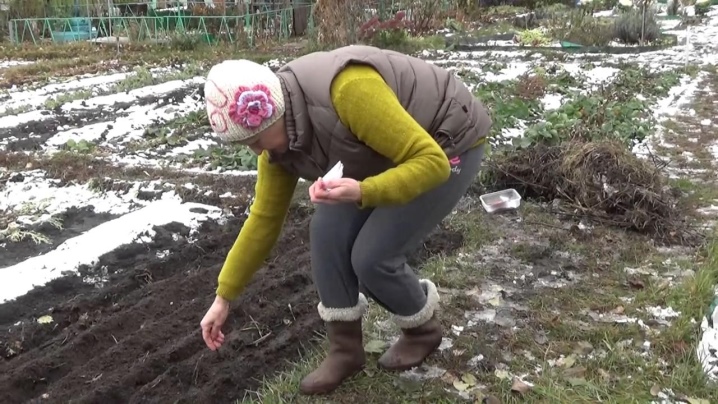
The algorithm for growing carrots before winter is standard, but the following features of sowing dates by region should be taken into account:
- Moscow region and Middle lane – starting from the third week of October;
- Ural – the second decade of September or the beginning of November;
- Siberia – from late September to early October.
If a thaw is predicted, then it is better to postpone the planned work on planting carrots.
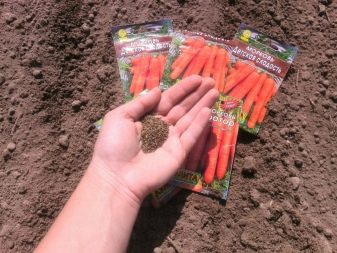
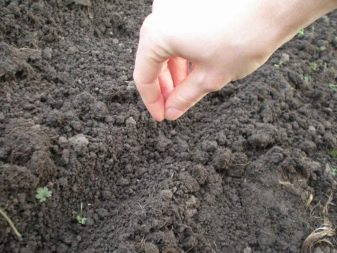
Prepare
Initially, it is important to note that carrots are a cold-resistant vegetable crop. Seed material is able to lie quietly for several months in frozen soil, without losing its properties. Given these features, many gardeners prefer planting carrots before winter. However, such a process has a number of important features and requires appropriate preparation.
Site Selection
It is this component of the preparatory phase that is strongly recommended to pay special attention to. The bed should be located on the most even place, which at the same time will be protected from the wind and well warmed up by the sun. It is highly undesirable to sow carrots on the slopes, since in such cases the seeds themselves can be simply washed away with water.
If it was possible to select a site that fully meets all of the above requirements, then at the next stage it will be necessary to determine which crops were grown on it earlier. And we are talking about a 3-year time period. Taking into account the crop rotation rules, which are of particular importance, the optimal precursors of vitamin root crops will be:
- tomatoes and cucumbers;
- zucchini and squash;
- melons, watermelons and pumpkins;
- potatoes;
- cabbage;
- bow.

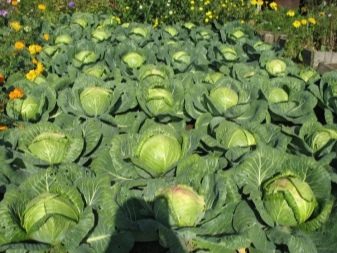
As long-term practice proves, the beds, on which the listed plants previously grew, and into which compost and humus were added, give a high-quality and rich harvest of carrots. Naturally, it is important to list the most undesirable predecessors of the described culture, which include:
- beans;
- celery;
- parsley, dill and fennel;
- the carrot itself.
If these crops were grown on the site, then the root crop in question is allowed to be sown on it no earlier than after 3 years. This will minimize the risk of infection with common diseases and pest attacks. After introducing fresh humus or manure into the soil, planting is allowed after a 2-year break.
Otherwise, the tops of carrots will be very tall and juicy, and the fruits themselves will be branched and deformed.
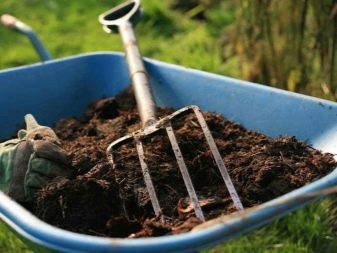
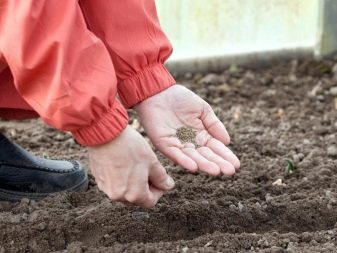
soil
Soil preparation is carried out in advance, until it begins to freeze. 1-1,5 months before sowing, it will be necessary to perform the following steps.
- Thorough cleaning of the site, which involves the removal of weeds and all plant residues of previous crops.
- Deep digging for the entire length of the bayonet, which is from 30 to 40 cm.
- Fertilization into the soil, performed in parallel with digging. It is important to abandon such organic matter as manure. The best option would be to add a mixture of humus (2-4 kg), superphosphate (20-25 g) and potassium salt (10-15 g) to each square of the bed. By the way, often experienced gardeners use ash instead of mineral dressings. It contains all the necessary elements, and its consumption is 1 cup per square meter.
- Deep loosening of the soil and the creation of grooves 5 cm deep at intervals of 15-20 cm. By the time of sowing, these grooves, as a rule, are compacted and become no deeper than 2-3 cm.
- Covering the treated area with a film or other material that can effectively protect the beds from moisture. This will protect the site from erosion during precipitation and the spread of soil by the wind. Such shelter on the sides of the site can be pressed with bricks, stones, boards and other heavy objects that are at hand.
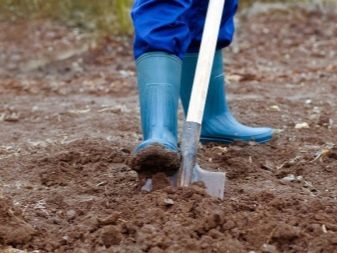
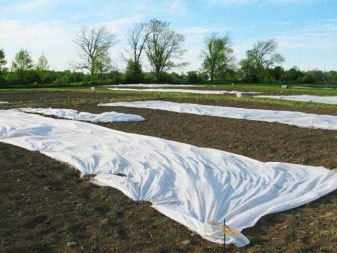
In addition to all of the above, it would be useful to sow any available green manure, which, when growing up to 15-20 cm, is embedded in the ground. It is important to remember that the described root crops love an increased concentration of humus.
Separately, it is worth focusing on the use of fertilizers. They are selected according to the type of soil as follows.
- Sour soil. To neutralize the acidic environment, take a glass of wood ash or 1 g of dolomite flour per 150 square meter. An alternative option involves the introduction of 300 to 400 g of ordinary chalk.
- Clay, heavy soil. Dilution with sand or partially rotten sawdust will help here. This allows you to make the soil more loose and airy. It is important to remember that fresh sawdust and other non-decomposing natural materials are very likely to attract such a dangerous pest as a carrot fly.
- Poor soil. Additional fertilizing containing nitrogen will be required, at the rate of 1 tablespoon per square meter of beds. It is important not to exceed the indicated rate, since oversaturation will not provide an increase in yield, but it will cause cracking of the soil and deformation of the fruit.

Another important point is the preparation and sifting through a large sieve of a sufficient amount of dry land before the onset of the first cold weather.
In parallel, a mixture of peat, compost and humus is prepared at the rate of 4-5 buckets for each square of the plot for sowing carrots. It is recommended to sort it out with your hands, getting rid of lumps, and dry it in the sun. All such blanks are scattered in boxes or bags, after which they are placed in a warm and necessarily dry place. The listed operations are necessary to ensure comfortable conditions and the formation of soil that will not crack and create obstacles for the germination of carrots.
Regardless of the peculiarities of sowing, when growing vitamin root crops, it is strongly recommended to take care of the stock of the described mixture. Often, carrots begin to be planted when the soil is already cold enough and freezes into clods. Such soil will not work to cover the seeds. And it is much more profitable to prepare a mixture of earth yourself than to purchase ready-made.
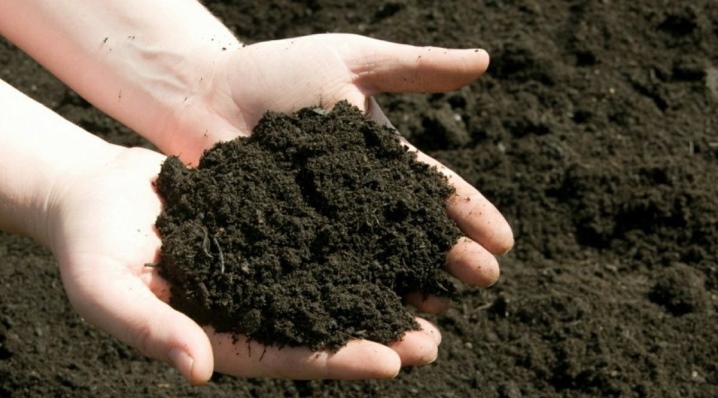
Planting material
As already noted, not all varieties of the crop in question are suitable for planting before winter. That is why when buying seeds, it is important to pay attention to the packaging, where the relevant information should be placed. It is recommended to purchase seed in specialized stores. It should always be remembered that the future harvest of root crops directly depends on its quality.
Another key point is that there is no need to treat seeds with growth stimulants before sowing. It is worth considering here that autumn planting does not provide for quick shoots. In this case, on the contrary, premature germination should not be allowed in order to avoid the death of seedlings in the cold.
In order to disinfect and protect against diseases, seeds can be treated with a weak solution of potassium permanganate. After that, they will need to be completely dried. It is important to increase the consumption of material by approximately 25 percent when sowing.
This approach allows you to compensate for the consequences of a snowless winter and thaws.


Technology
As soon as stable cold weather comes and the thermometer does not rise above +5 degrees, and the soil begins to freeze at least 5-8 cm, they begin to sow. In this case, the algorithm of actions will look as follows.
- In the presence of snow, carefully clear the bed with a broom or soft brush.
- Scatter the seeds into pre-formed grooves at intervals of about 3-4 cm. In some situations, the material is simply scattered on the surface of the bed. At the same time, many experienced gardeners use special seeders that allow you to adjust the required seed spacing. Their optimal consumption when planting before winter is from 0,8 to 1 kg per square meter. It is worth noting that in situations with spring planting of crops, this figure is less by 0,2 kg.
- If desired, you can plant radishes or lettuce in parallel, which in the spring will mark the rows of carrots, which will facilitate the procedure for weeding and loosening.
- Seeds are covered with soil prepared earlier, dry and sifted through a sieve, and the bed is mulched, compacting the top layer.
- When the first winter precipitation appears, snow is raked onto the beds and the crops are covered with spruce branches to securely preserve the mulch.
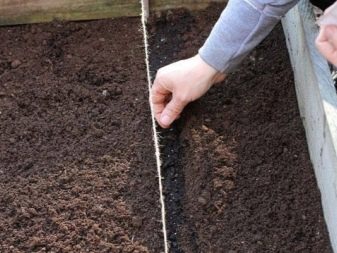

One of the key points of the described method of growing root crops is that crops should not be disturbed until the spring thaw. Up to this point, carrot seeds will simply “sleep” in the ground.
Aftercare
In this case, we are talking about the following important events, the timeliness of which directly affects the quality and volume of the harvest of carrots planted in the fall.
- With the onset of warming, spruce branches are removed from the site and part of the snow cover is raked to speed up its melting.
- As soon as the snow is completely gone, remove all branches and grass.
- Small arched supports are placed along the perimeter of the sown area and a film is pulled over them. This allows you to effectively protect carrots from possible short-term frosts.
- When the first shoots appear, the covering material is removed. It is important that stable heat is established, and the average daily temperature is fixed at +15 degrees.
- In the presence of dense seedlings, it will be necessary to thin out the beds so that there are intervals of approximately 2 cm between young plants. Excess shoots are removed after about 2-3 weeks with an increase in intervals of up to 4-6 cm. Otherwise, the roots will be small. By the way, often when using special seeders at the stage of sowing, the need for such manipulations disappears.
- The appearance of the first shoots is a signal to start weeding the site. In this case, weeds will need to be removed exclusively by hand. The use of any herbicides at this stage is highly undesirable.
- Processing from parasites is carried out approximately 15 days after the appearance of the first greenery in the beds.
- At the stage of active growth and during the formation of the first 3-4 full-fledged leaves, young plants need to be fed.
As a rule, a single application of complex fertilizers with embedding into the soil is enough for this.
In addition to all of the above, if a drying crust is found on the ground, it is necessary to irrigate and evenly moisten the problem areas. But here it is important to remember that even a slight excess of moisture can lead to decay. After watering, it is strongly recommended to loosen the aisles.
